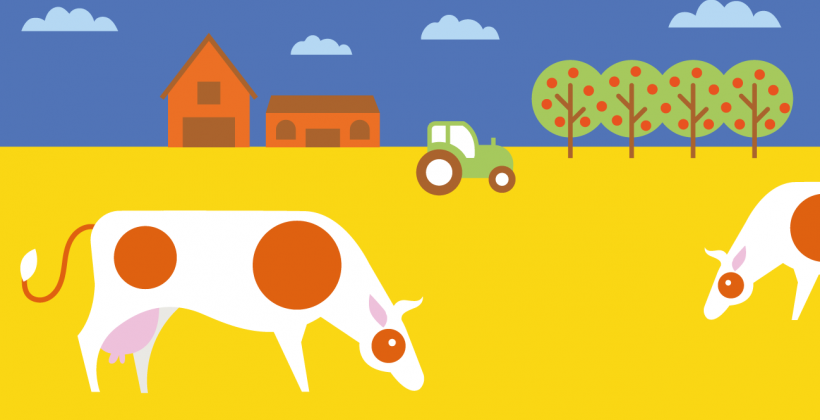DNA testing of foods (Q&A)
Last Updated : 08 December 2013Why are foods tested for DNA (Deoxyribonucleic acid)?
DNA (Deoxyribonucleic acid) is the unique hereditary material in all cells, and is found in animals and plants, and therefore in our food.
With advancements in molecular biology, DNA testing has become a useful instrument to assess the safety, quality and integrity of the food chain. It has numerous applications including the identification of allergenic material, the detection of adulteration (e.g. species replacement as a result of commercial fraud), and the identification of microbes that cause food-borne diseases. It can also be used for traceability purposes throughout the supply chain.
DNA testing can be used in different contexts by different operators including researchers, food business operators and regulatory authorities. The latter may use this methodology to assess the safety and authenticity of foodstuffs, and uncover any breaches of labelling legislation.
Why are some products testing positive for horse meat DNA, when they are labelled beef?
This issue came to light on 15th January 2013 when the Food Safety Authority of Ireland reported that horse DNA had been discovered in frozen beef burgers sold in several Irish and British supermarkets. These burgers were labelled as containing beef, not horsemeat. This discovery was made during a surveillance programme on the authenticity of processed meat products. Contamination of a meat product with another animal species could be due to either accidental contamination or deliberate fraud. As a result of these initial findings, investigations are on-going to identify the precise route of horsemeat into the food chain. To date more than 23 EU countries are involved and the issue extends as far afield as Hong Kong. Product lines other than burgers have also been tested and some have been implicated (e.g. meat pies, pasta dishes, sauces, soups).
Horsemeat is routinely consumed in some EU countries; however, in some countries it is not sold as there is no market for it, mainly because it is not culturally acceptable. Adulteration of foodstuffs with horsemeat is not normally a food safety concern (i.e. injurious to health or unfit for human consumption). To-date no risk to consumer health has been identified.
The legal responsibility for placing safe food on the market lies with the food industry and food business operators must remain vigilant in ensuring the authenticity of ingredients.
How is the testing conducted?
Three methods can be used: (i) Polymerase Chain Reaction [PCR] sequencing (ii) RFLP (Restriction Fragment Length Polymorphisms) and (iii) DNA barcoding.
(i) The most common method, PCR (Polymerase Chain Reaction), involves extracting DNA from the food followed by amplification of specific pieces of DNA through an enzymatic process. The amplified DNA fragments are separated by size using a technique called agarose gel electrophoresis and are compared with DNA fragments of known size to enable their identification.
(ii)In RFLP analysis, the DNA sample is broken into pieces by restriction enzymes i.e. enzymes that can recognize specific base sequences in DNA and cut the DNA at that site (the restriction site). The resulting restriction fragments are separated according to their size using gel electrophoresis. RFLP analysis was the first DNA profiling technique inexpensive enough for widespread application.
(iii)DNA barcoding is a molecular based system, which is based on the analysis of a short genetic marker called the “DNA barcode” in an organism's DNA. By comparing the DNA barcode to a compiled database of barcodes it can be identified as belonging to a particular species. The success of the technique depends on (a) the molecular variability between species and (b) the availability of high quality repositories of reference sequences (i.e. DNA sequences of known species).
Are there any limitations of DNA testing of foods?
Cross-over contamination
With technical advancements, DNA testing techniques have become very sensitive to contaminating DNA. During PCR, contaminants may be amplified up to a billion times their original concentration and can thus influence PCR results. Such contamination may occur in the laboratory (in the absence of good laboratory practices) and/or in the food chain (e.g. cross-over contamination between two animals slaughtered in the same facilities or carried in the same vehicle).
Loss of DNA integrity
DNA testing techniques require high-quality DNA to work successfully and their effectiveness can be negatively influenced by altered or fragmented DNA. During processing, the DNA can be damaged or destroyed as a result of physical (i.e. heating, boiling, UV radiation) or chemical (i.e. addition of food preservative, artificial sweeteners) treatments.
Hybridisation
There are several cases of species or breeds with the same DNA profile as a result of genetic hybridisation, for example through crossbreeding. This phenomenon is common in livestock (i.e. cattle). In these cases, DNA testing may not differentiate between breeds, therefore making it impossible to track some meat products along the food chain.
What is the future of DNA testing of foods?
Emerging technologies have the potential to simplify the methodologies, although the uptake of these by the food industry may be limited by cost and some of factors mentioned above. Improved methods will assist in the protection of consumers and producers from frauds, and animal species from illegal commerce.
References:
Food Safety Authority of Ireland. FAQ on Horse and Pork DNA in Meat Products.








